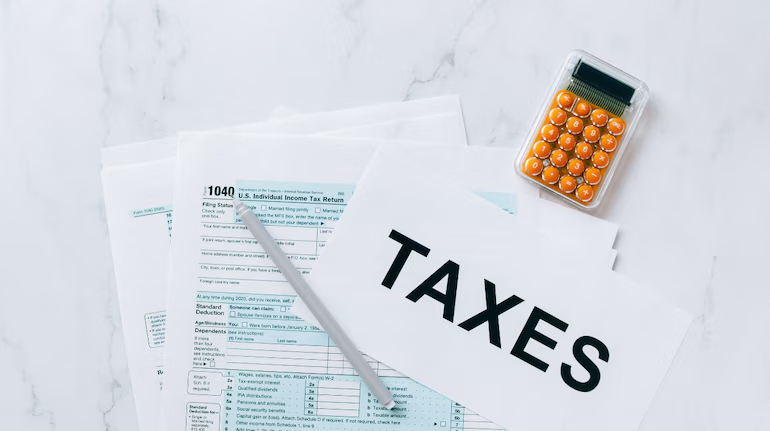In December 2023, the Income Tax department tweaked ITR forms 1 and 4 notified for Assessment Year 2024-25. The Central Board of Direct Taxes (CBDT) has introduced many additional reporting requirements and modifications due to the Finance Act 2023 amendments.
ITR filing AY 2024-25: The Income Tax department time to time introduces changes in tax return forms seeking some additional details from taxpayers. Like in December 2023, the Income Tax department tweaked ITR forms 1 and 4 notified for Assessment Year 2024-25. The Central Board of Direct Taxes (CBDT) has introduced many additional reporting requirements and modifications due to the Finance Act 2023 amendments.
Tax regime declaration
In the revised tax return forms, a taxpayer filing ITR 1 is required to indicate his choice of tax regime in the return of income. An assessed filing ITR 4 will be required to file Form 10-IEA to opt out of the new tax regime. A new column has been added to claim deduction under section 80CCH in new ITR Forms 1 and 4.
Capital gains accounts scheme
Taxpayers using Income Tax Return (ITR) forms 2, 3, 5, and 6 are mandated to provide exhaustive information regarding the Capital Gains Account Scheme compared to the previous year’s forms, where only the deposited amount was necessary. The revamped Schedule CG stipulates the inclusion of additional particulars such as the deposit date, account number, and IFSC code.
Form 10-IEA must for ITR 4 filers
ITR-4 or SUGAM is for individuals, HUFs and firms (other than LLP) whose total income is up to Rs 50 lakh and the income from business and profession that is calculated under sections 44AD, 44ADA or 44AE under Income Tax Act.
Taxpayers opting for ITR 4 will now need to file Form 10-IEA to opt out of the new tax regime. Form 10-IEA was introduced to allow taxpayers to opt for the old regime if they wish to do so.
The “Receipts in Cash” column has been added to ITR-4 to claim an enhanced turnover limit.
Legal Entity Identifier requirement
ITR forms 2, 3, 5, and 6 are income tax return forms used by taxpayers to report their income to the tax authorities in India. These forms require a Legal Entity Identifier (LEI), which is a unique 20-character alpha-numeric code. The LEI is used to identify parties involved in financial transactions globally.
Taxpayers are mandated to provide their LEI when claiming a refund amounting to Rs 50 crore or more. This requirement ensures transparency and traceability in high-value financial transactions, aiming to prevent fraudulent activities and promote financial integrity.
Acknowledgment number and UDIN requirement in ITR-6
Companies submitting ITR 6 must now include acknowledgment numbers and Unique Document Identification Numbers (UDIN) for audit reports as per section 44AB (tax audit report) and section 92E (transfer pricing report).
Donations to political parties
Details of contributions made to political parties must be disclosed in the new Schedule 80GGC, which is applicable to ITR forms 2, 3, 5, and 6. The required information includes the date of the contribution, contribution amount (including breakdown of cash and other modes), eligible contribution amount, transaction reference number for UPI transfer or cheque number/IMPS/NEFT/RTGS, and IFSC code of the bank.
Deduction details for medical treatment
For claiming deductions related to maintenance and medical treatment expenses for a dependent with a disability, details must be provided separately in Schedule 80DD (and not under Schedule VI-A).
Required information includes:
> Nature of the disability
> Type of dependent (spouse, son, daughter, father, mother, brother, sister, or member of the HUF)
> PAN of the dependent
> Aadhaar number of the dependent
> Date of filing and acknowledgment number of Form 10-IA
> UDID Number.
Agniveer Corpus Fund
Section 80CCH of the Income Tax Act was introduced through the Finance Act 2023. This section enables individuals filing their tax returns through ITR forms 1, 2, 3, or 4 to seek a deduction for the amount deposited in the Agniveer Corpus Fund. As a result, a dedicated column has been added in “PART C – DEDUCTIONS AND TAXABLE TOTAL INCOME” to specify the eligible deduction amount.

